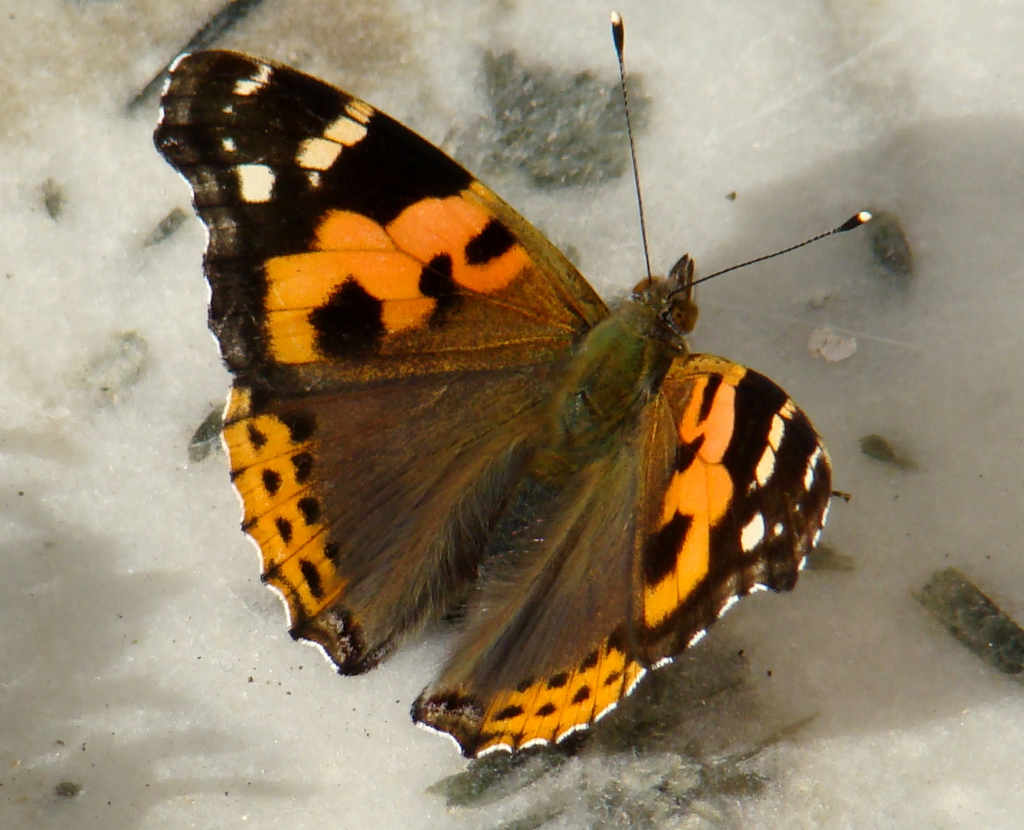
Vanessa indica (Indian Red Admiral)
The Vanessa indica, commonly known as the Indian Red Admiral, is a visually striking butterfly that thrives in the scenic landscapes of the Great Himalayan National Park (GHNP). Its vibrant coloration and high-altitude adaptability make it a key species among Himalayan fauna.
| Common Name | Indian Red Admiral |
| Scientific name | Vanessa indica |
| Family | Nymphalidae |
| Description |
Commonly known as the Indian Red Admiral, is a medium-sized butterfly easily identified by its dark brown wings, which are strikingly marked with bright orange bands and white spots near the tips. The underside of its wings features a mottled mix of browns and greys that provides effective camouflage when it rests on tree bark or rocky surfaces, helping it stay hidden from predators. This beautiful butterfly is typically found at elevations between 1,500 and 3,000 meters and is often seen fluttering gracefully through forest clearings, meadow edges, and sunlit trails within the Great Himalayan National Park (GHNP). It frequently basks in the sun during cooler hours, perching quietly on leaves or stones to absorb warmth. Vanessa indica breeds on stinging nettle plants, which provide food for its caterpillars. The adult butterflies feed on a wide variety of substances, including nectar from wildflowers, tree sap, and even fermenting fruits. Their flight is rapid and unpredictable, often drawing the attention of nature lovers and trekkers exploring GHNP’s rich biodiversity. Besides its visual appeal, Vanessa indica plays a vital role in the ecosystem as a pollinator, supporting the reproduction of various flowering plants in the park. Its presence in GHNP is not only a delight for butterfly enthusiasts but also an important indicator of the park’s environmental health and habitat quality. Observing this butterfly in its natural setting is a wonderful reminder of the delicate balance maintained in protected areas like GHNP. For those interested in exploring more butterfly species in the park, pages on Aporia leucodice, Lycaena panava, and the overall GHNP fauna offer deeper insights into this vibrant ecosystem. |



